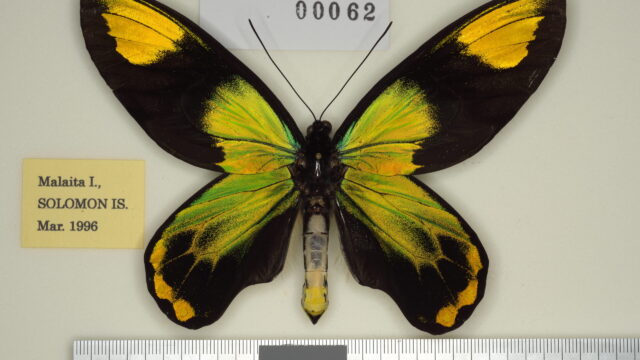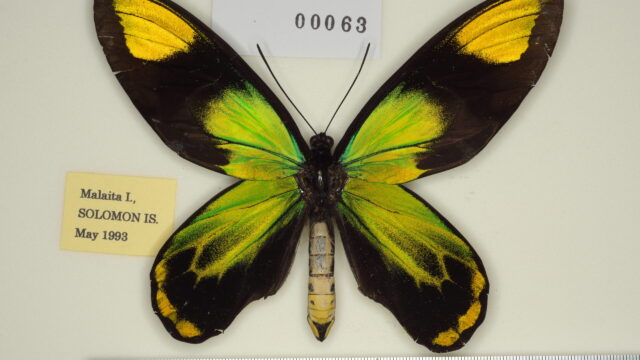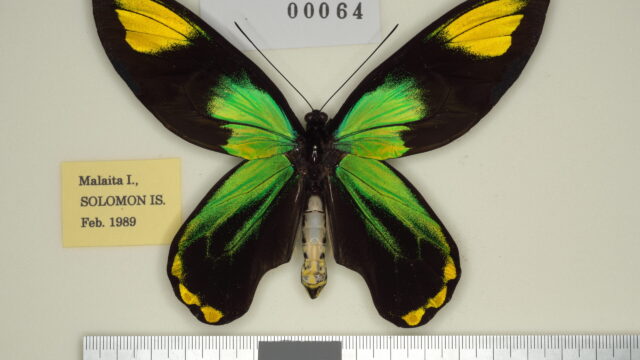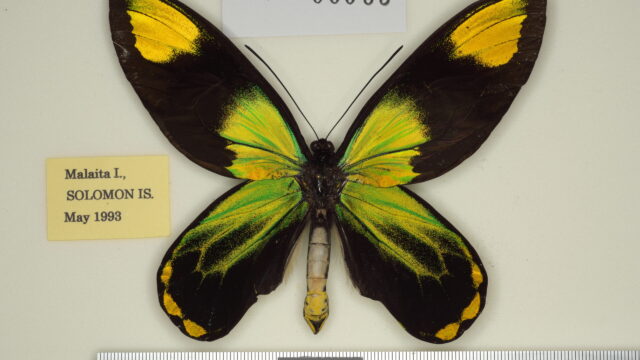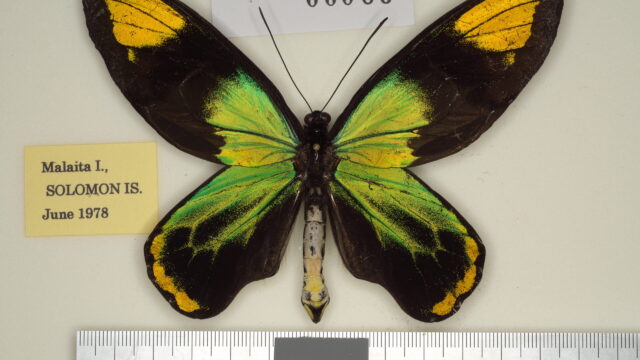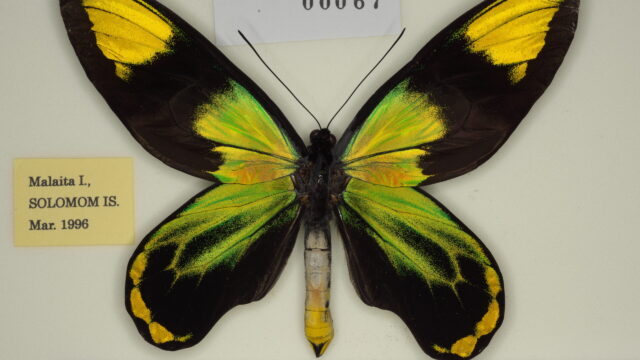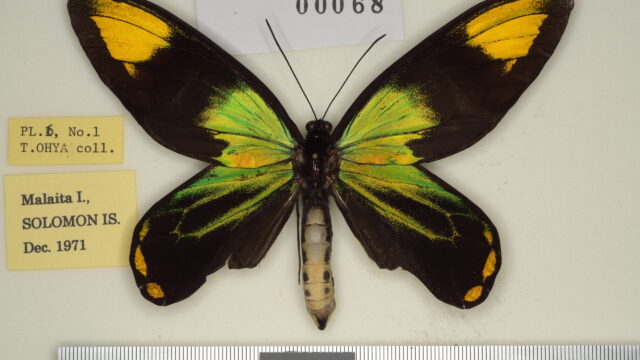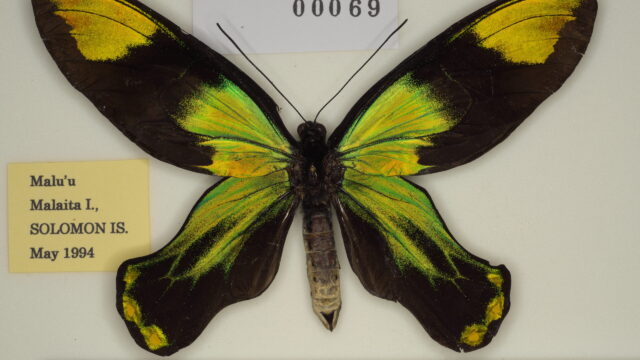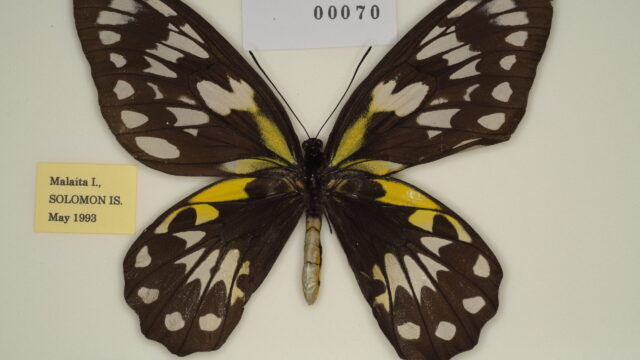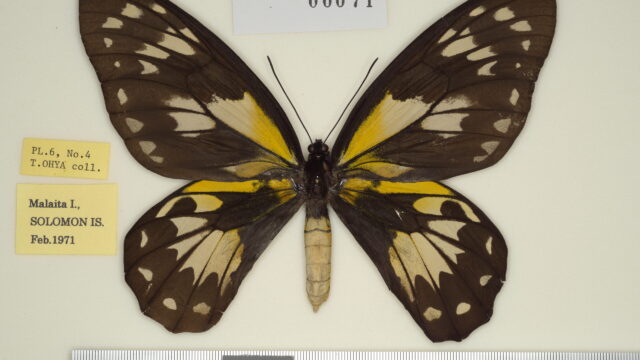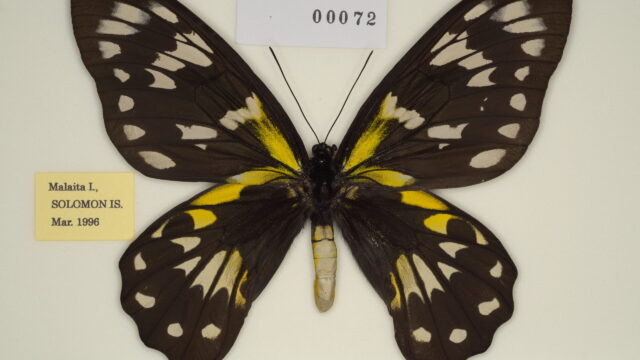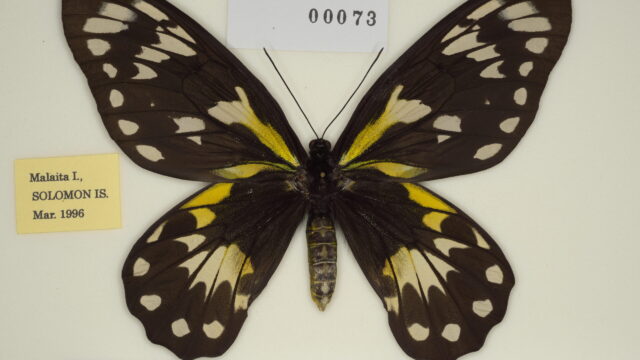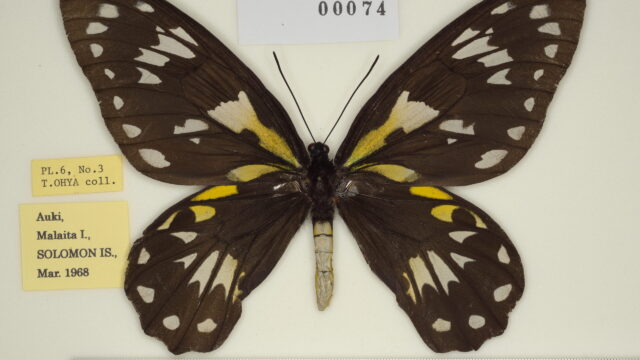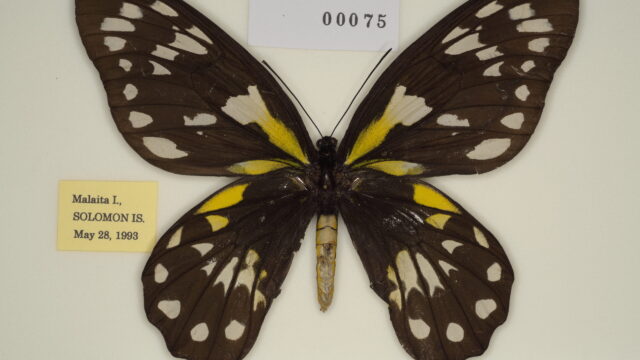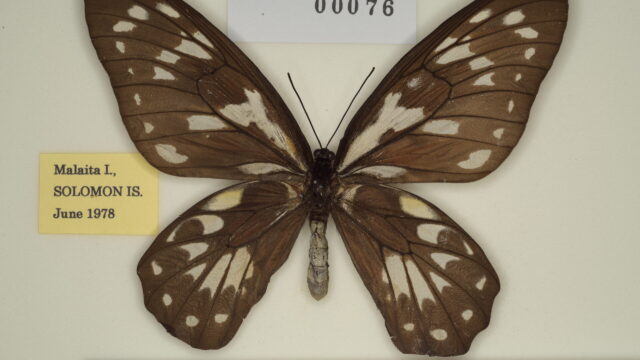- Ssp. reginae Salvin, 188825) [♂, ♀]
= maramasikensis Morita, 200016) [♂, ♀] (Mara Masike Is.)
(Distribution) [Map 6]
SOLOMON ISLANDS: Maana’oba (=Ngwalulu) Is., Malaita Is. (Malu’u, Dala, Fiu River basin, Auki (=Aoke), Ru’u Village, Fulo, Su’u), Maramasike (=Small Malaita) Is., Ulawa Is.
(Episodes of discovery and original description)
Based on a ♂ collected by Woodford on May 26, 1886, in Northwest Bay, Malaita Island, and published almost simultaneously as victoriae by Salvin and Godman and Grose Smith in 1887, this was the first description of ♂ of this species. The reason is that after Gray’s (1856) report of ♀, ♂ had not been found for 31 years. Salvin, however, assumed that Gray’s ♀ (collected by Macgillivray) was collected at Wanderer Bay, Guadalcanal Island, a previously uncertain locality. He considered the ♂ specimen collected by Woodford at Aola, Guadalcanal Island, to be the true ♂ specimen of victoriae and that of Malaita Island to be a different species, which he re-published in 1888 together with two ♀♀ specimens (collected by Woodford on May 27 and 28, 1886). The name “reginae” is thought to have been given to Regina (= queen), namely Queen Victoria, as in the case of the species victoriae, as a dedication.
(Characteristics)
HW of ♂ is blackened, and the pale spots on FW/HW of ♀ are yellowish, with scattered green scales on the basal streak on FW.
(Spotted pattern)
♂: The subapical patch of FW is triangular, the largest of all subspecies. In contrast to the other subspecies, on HW the submarginal golden spots are smaller and green coloring reduced, so that almost half of the wing is blackened on the inner margin.
♀: Pale spots of wings are about the same size as ssp. epiphanes, and a bright yellow color spreads from the wing-base, with a slight green tinge.
(Variation)
♂-f. brossardi Deslisle, 19954) (➡victoriae )
♂-f. rubesco Haugum & Low, 197812) [FW discoloration] Iridescent scaling of the subapical area replaced by a rusty-red, with a poorly defined coppery sheen.
♀-f. zeuneri Deslisle & Sclavo, 20158): [Aberrant FW/HW pattern] There are no black areas, except for the marginal areas and veins of FW/HW and the ground color of the wings is greyish white. (Whitening type) (➡isabellae )
♀-f. polychroma Haugum & Low, 197812): [FW/HW discoloration] The pale spots of both surfaces of FW/HW have some orange areas owing to an optic mixture of the (ordinary) creamy scales and (abnormal) scaling of a cinnabar red color. This seems to be caused by artificial elements.
